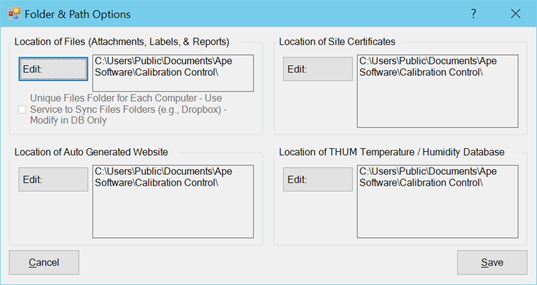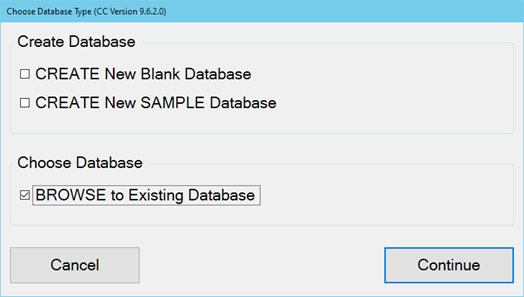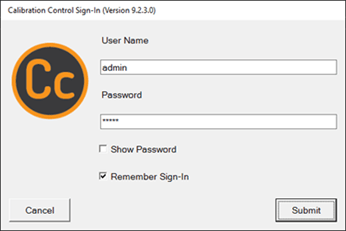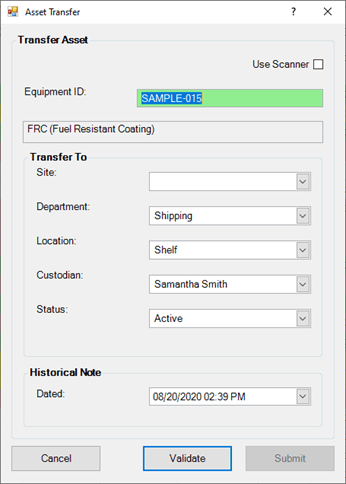Creating a Multi-User Environment
Set up Multiple Users and/or Install New PCs
Setting up shared access for multiple users to use Calibration Control (our Calibration Management Software ) can be as easy as changing your machine's configuration for the software, choosing to the right database format, and pointing Calibration Control to the correct location. Watch a video available at the bottom. These steps may require resetting the configuration.
Database Type: MS Access or SQL Server
- If you are using an MS Access database file, you should be familiar with locating true database and moving Access database.
- If you are using a SQL Server database, please refer to installing and connecting to the database in the following help files: Add DB to SQL Server and Connect to SQL Server DB.
Shared Folder: Read/Write Permissions
Move the DB and the four folders that comprise your Files Folders to a shared network location where all users are granted read-write access.
(Most of the difficulties users experience with implementing a multi-user environment are strictly related to network folder permissions! Therefore, if you experience difficulties, first seek assistance from your network administrator.) Refer to our Minimum Requirements as it describes more folder locations that require read/write permissions by all users.
Set up the Common Files Folder Location (both Access & SQL)
Calibration Control stores attachments and templates in the Files Folder, comprised of four sub folders (i.e., Attachments, Emails, Labels, and Reports). To use a common Files Folder, the network location will contain these four subfolders and its new path will be configured in the software. Ensure each networked user is using the Common Files Folder so the sub folders are equally accessible by all. Do this by:
- Common Mapping: Ensure each user has the same network mapping for the Files Folder. For instance, if a mapped drive (e.g., "M:\Server2\Common Files") is used for one user, the same path will be used for all users.
- Point Ape Database Software: From the Advanced tab in Options dialog, click the Folder & Path options. Ensure to edit the 'Location of Files' for the new path of the Files Folder location on a shared drive or network location.

- Prevent Missing Files / Move Existing Content: Ensure all attachments and custom templates (e.g., reports, labels, & emails) are placed in the new common Files Folder. Double-check previous Files Folder paths for custom content and manually move the items to the destined common Files Folder location. Verify the local Settings Folder location for old Files Folder content. Other than Attachments files, stock Reports and Label templates can restore by default in the new common Files Folder location.
Adding New Seats or Additional Users
Depending on the chosen Authentication Method between Machines or Users (Sign-In Mode), adding seats may refer to simply installing the software on more clients, or creating additional Users with their own credentials to sign in to Calibration Control. Often, both scenarios are true, in which new users are installing on new machines.
Therefore, new machines and new users must simply connect to the correct, true database. Launching the program after new installation presents a dialog to choose between database types of MS Access or SQL Server.

SQL Server:
If you use SQL Server, the following dialog is to choose between the Sample or Blank (cloud-hosted) database, or a Custom database. If your own organization hosts/manages your SQL Server database, select the 'Custom DB' option. The next step will be to identify your SQL Server database credentials or connection string. Refer to troubleshooting connection to SQL Server help topic if you experience problems connecting from a new machine.

MS Access:
If you use MS Access (a database file), the software next presents a dialog with option to either create a new database (blank or with sample records), or to browse and navigate to an existing database location. If a database already exists and can be found in a network location, then select the 'BROWSE to Existing Database' checkbox and click [Continue] .
When a blank or sample database is auto-connecting, refer to troubleshooting location of Access database for how-to help tips.
► Watch a video for doing this in Calibration Control. While the software appearance may differ from the current version, the concept remains true to set up a multi-user environment.





